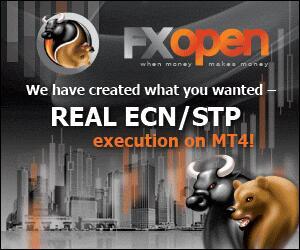
When expenses spike in a given period, or a company records other transactions that affect its revenues, net income, or other key financial metrics, the financial statement data often doesn’t tell the whole story. In the case of certain types of accounting errors, it becomes necessary to go back to the general ledger and dig into the detail of each recorded transaction to locate the issue. At times this can involve reviewing dozens of journal entries, but it is imperative to maintain reliably error-free and credible company financial statements. An accounting ledger, also commonly called a general ledger, is the main record of your business’s financial standing. It functions as the repository of all financial transactions and is used to prepare a number of reports, including balance sheets and income statements. An accounting ledger records transactions and helps generate financial statements for investors, creditors, or even regulators.
- Thus, various adjusting entries include entries for accrued expenses, accrued revenues, prepaid expenses, deferred revenues, and depreciation.
- Thus, you need to check the balances for balance sheet accounts like assets, liabilities, and stockholder’s equity.
- The advent of machine learning, automation, and the Workday Enterprise Management Cloud suggests the era of a continuous close for financial reporting is within reach.
- For instance, you can create a group containing records of all the utility bills and give it a GL code #1.
In addition, they include detailed information about each transaction, such as the date, description, amount, and may also include some descriptive information on what the transaction was. Sage Intacct stands out in the realm of general ledger software, primarily due to its Intelligent GL feature powered by artificial intelligence. A trial balance is an internal report that lists each account name and balance documented within the general ledger. It provides a quick overview of which accounts have credit and debit balances to ensure that the general ledger is balanced faster than combing through every page of the general ledger.
A Beginner’s Guide to General Ledgers
It records all the transactions that take place between you and your debtors. Here, debtors are nothing but the business entities to whom you have sold goods that you manufacture. A sales ledger is a detailed list in chronological order of all sales made.
A company may opt to store its general ledger using blockchain technology, which can prevent fraudulent accounting transactions and preserve the ledger’s data integrity. An income variance report breaks down income and expenses during the current period and a selected period, showing the difference and the variance percentage. These reports can let you know when sales are up or down, what type of sales are overperforming or underperforming, and to take better control of your product costs. Financial ratios are relationships created from your financial information found in the general ledger software and are used for comparison purposes.

Furthermore, a General Ledger helps you to know the overall profitability and financial health of your business entity. In addition to this, the detailed information contained in General Ledgers helps you to do the audit smoothly. General Ledger is the second most important Book of Entry after the Journal.
Trial Balance: Checking for Discrepancies and Errors
This helps accountants, company management, analysts, investors, and other stakeholders assess the company’s performance on an ongoing basis. That means the financial information, as well as the more detailed journal entries that feed into it, provide a picture of the past. A general ledger (GL) is a set of numbered accounts a business uses to keep track of its financial transactions and to prepare financial reports. Each account is a unique record summarizing a specific type of asset, liability, equity, revenue or expense. In accounting software, a general ledger sorts all transaction information through the accounts. Also, it is the primary source for generating the company’s trial balance and financial statements.
5 things to keep in mind when choosing a core banking system – American Banker
5 things to keep in mind when choosing a core banking system.
Posted: Mon, 28 Aug 2023 18:34:52 GMT [source]
The income statement will also account for other expenses, such as selling, general and administrative expenses, depreciation, interest, and income taxes. The difference between these inflows and outflows is the company’s net income for the reporting period. When a company receives payment from a client for the sale of a product, the cash received is tabulated in net sales along with the receipts from other sales and returns.
Is an accounting ledger used in double-entry bookkeeping?
This also facilitates the electronic preparation of the company’s financial statements. With legacy accounting systems, the chart of account segments are configured at the time of deployment and fixed for the duration of their lifespans. Depending on the business’s needs, it typically creates chart of account segments for account, cost center, or department—or possibly even a product or project. Thus, it forms the basis of your financial statements and helps you in evaluating the financial affairs of your firm. Furthermore, unlike journal where transactions are recorded in chronological order as they occur.
- When in doubt, please consult your lawyer tax, or compliance professional for counsel.
- This eliminates the need for manual data entry, reducing the potential for errors and ensuring that financial data is always up-to-date and accurate.
- Bookkeeping at small businesses can be accomplished with general ledger software for simple data entry, basic financial reporting, or a desire to add subledgers to their Excel spreadsheets.
Once the Journal is complete, these transactions are then posted to individual accounts contained in General Ledger. However, the number of debit and credit accounts does not have to excel inventory be equal, as long as the trial balance is even. For example, you may have 10 payments listed on the credits side to pay for supplies but only two sales (listed in the debits side).
What Is General Ledger Software?
This is because General Ledger Accounts records transactions under various account heads. Further, it provides detailed information with regards to such accounts. A General Ledger is one of the important records in the system of accounting. It is prepared after you pass journal entries in the Books of Original Entry (Journal). In other words, you record transactions under the individual General Ledger accounts to which such transactions relate.

A general ledger is the system of record for an organization’s financial transactions, whether it’s maintained on paper, on a computer, or in the cloud. It uses numbered accounts, including debits and credits, from which a trial balance is computed. It holds all the data needed to prepare periodic financial statements—such as balance sheets, income statements, cash-flow statements, and other financial reports—on a monthly, quarterly, or annual basis.
What is an accounting ledger?
In other words, you get a clear view of your business’s capacity to generate profits and the resources you have to meet outsider’s claims. The benefit of these types of reports is their attention to each line item, and the ability to benchmark performance against other companies of different sizes.
If the business has more liabilities than assets, it can have negative equity. Equity can include things like common stock, stock options, or stocks, depending on if the company is privately or publicly owned by owners and/or shareholders. Liabilities are current or future financial debts the business has to pay. Current liabilities can include things like employee salaries and taxes, and future liabilities can include things like bank loans or lines of credit, and mortgages or leases. Instead, financially-minded individuals — and businesses — use ledgers to fastidiously document money that’s they’re paying out, or being paid. As the finance function continues to evolve in a rapidly changing world, technology has enabled businesses to expect more from their data and far beyond what the general ledger can provide.
General Ledger Accounting Software Market Demand, Growth Analysis and Strategic Outlook – ACUMATICA, OPEN – Benzinga
General Ledger Accounting Software Market Demand, Growth Analysis and Strategic Outlook – ACUMATICA, OPEN.
Posted: Sat, 02 Sep 2023 04:03:07 GMT [source]
The set of 3-financial statements is the backbone of accounting, as discussed in our Accounting Fundamentals Course. A general ledger summarizes all the transactions entered through the double-entry bookkeeping method. Under this method, each transaction affects at least two accounts; one account is debited, while another is credited. SoftLedger’s general ledger capabilities offer a flexible chart of accounts that can be tailored to meet the unique needs of businesses across industries. For example, a non-profit organization may require a chart of accounts that separates unrestricted and restricted funds, while a retail business may need to track revenue by product line. SoftLedger’s customizable chart of accounts ensures that businesses can track financial data in a way that makes sense for them.
You or your company’s accountant must always refer to the business’s general ledger when it comes to filing your taxes. With its focus on reporting what happened (past transactions), some of the information in a general ledger might already be https://online-accounting.net/ out of date, or it might not sufficiently reflect significant recent developments. The earliest known accounting records date back more than 7,000 years to Mesopotamia, where traders developed a way to track the exchange of goods and services.
